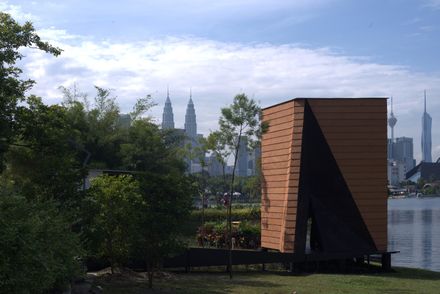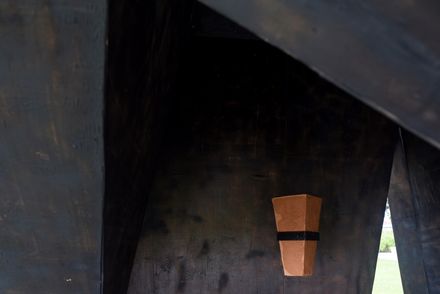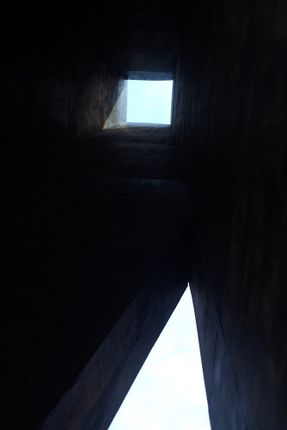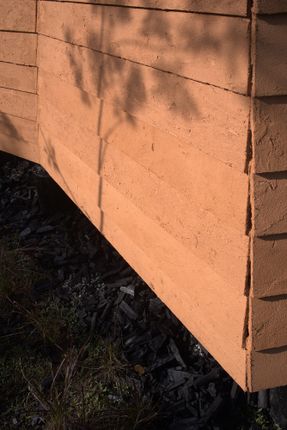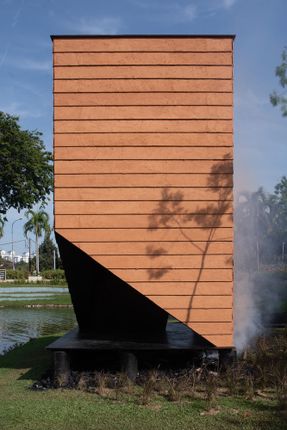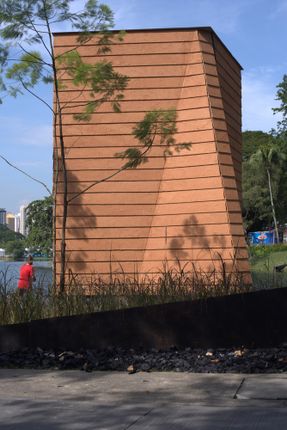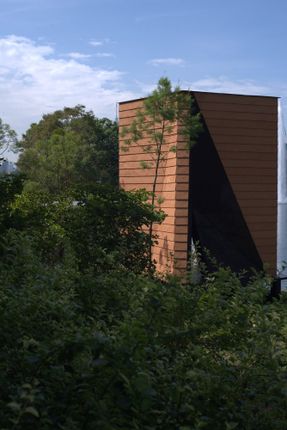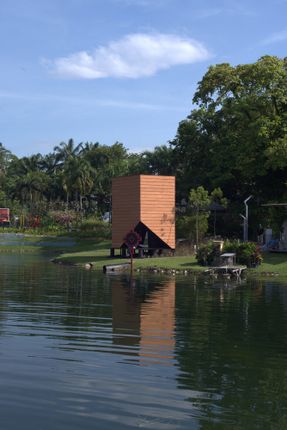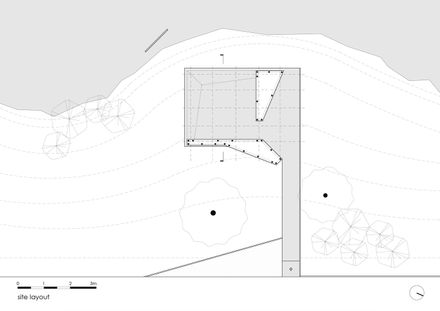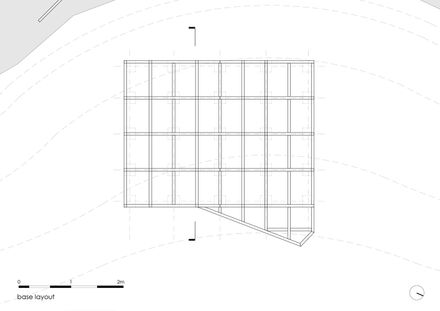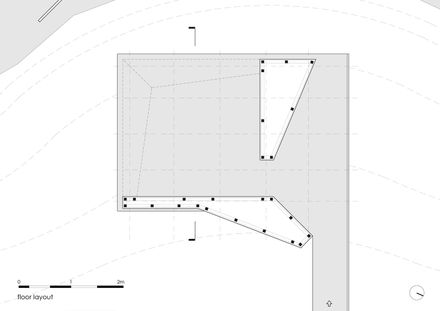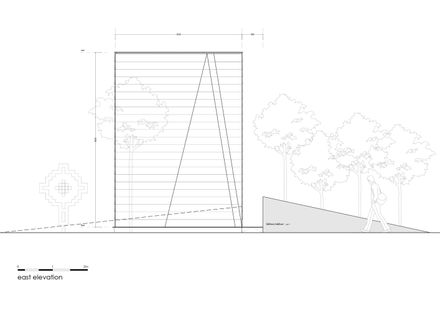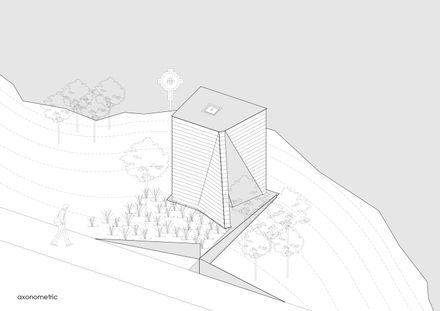Temple Of Darkness Bakhoor Bakhoor Pavilion
ARCHITECTS
Bunga Design Atelier
LEAD ARCHITECT
Mior Aizuddin Fahmi
GENERAL CONTRACTOR
Nature's Creation S/b, Lam Garden S/b
MANUFACTURERS
GNIHome Clay Plaster
LEAD TEAM
Mior Aizuddin Fahmi, Hafiz Sahar, Aliqhwan Azraei, Iqram Sazali, Adib Dzulfikry, Zulhilmi Fauzan
PHOTOGRAPHS
Hafiz Sahar
AREA
10 m²
YEAR
2025
LOCATION
Kuala Lumpur, Malaysia
CATEGORY
Pavilion, Public Architecture, Community
The Temple of Darkness Bakhoor Bakhoor by Bunga Design Atelier is an outdoor experiential installation – a contemporary temple born from smoke, scent, and silence.
Inspired by the ritual of burning bakhoor, where fragrant wood releases sacred fumes into the air, the piece reimagines the temple as a space of reflection rather than worship, of darkness rather than light.
Formed through folded geometries and pyramid-like planes, the structure stands as both altar and vessel. Made of sand, clay, timber, and fire, it breathes with elemental presence.
Within, a sensorial darkness envelops the visitor – a contemplative chamber where sight yields to scent, memory, and breath.
This temple is not built for gods but for humanity: a space to pause, to mourn, to resist. Through smoke and shadow, it speaks of absence and transformation, of lives lost and voices silenced.
As a gesture of solidarity, 'Bakhoor Bakhoor' rejects occupation and the ongoing devastation in Gaza – transforming ritual into resistance, and architecture into empathy.
Structurally, the pavilion is supported by a 3m x 3m x 5m steel frame system. This allowed for the clean, angular form while maintaining durability and simplicity during construction.
The pyramid-like inner space was built as an insert within the frame, and carefully lined with the burnt timber, while the outer skin, timber boards cladded with clay plaster, were applied in a way that gives rhythm and tactility to the facade.
The whole structure sits on raised supports with charcoal chippings beneath, protecting it from ground moisture and visually lifting it just slightly off the landscape.
Stepping inside, the atmosphere changes. The space opens into a pyramidal-like interior volume, fully clad in dark, burnt timber.
The charred surface adds depth and a slightly tactile rawness, drawing attention to light, sound, and material in a more heightened way.
A triangular opening frames the view of the city skyline with a Palestinian Ayn (The eye) motif at its center front, a symbolic reminder to reflect on Palestine's dire situation.
A central skylight opening filters natural light into the heart of the pavilion, creating moments where light meets texture in striking ways.
An incense pit made of clay invites visitors to interact with the pavilion through the act of burning bakhoor as a welcoming ritual, filling the space with smoke and emphasizing further the sunlight that casts inside.
Built with modest materials, clay, timber, and steel, it becomes more than just a structure. It becomes an experience.
In a time when architecture often tries to say too much or do too many things, this pavilion holds back, and in that restraint, it creates space for reflection, imagination, and calm.
The pavilion stands as a silent prayer and an act of defiance, a spatial offering to Free Palestine! And to honor all who endure under oppression.
In the quiet burn of its interior, the 'Temple of Darkness' invites each visitor to confront fragility, to remember, and to find light within the ash.


